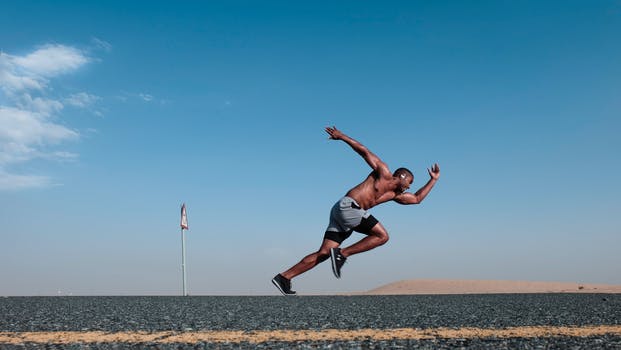The ability to use strength and apply it horizontally is a critical ability to athletes. Unfortunately, this is not an ability that is easily developed in the weight room. With a few notable exceptions, most weight room exercises are focused on the vertical application of force. This means that there is a lot of opportunity to develop this quality outside the weight room.
There are several tools that we can use to develop the ability to apply force horizontally. These include:
- Plyometrics
- Throws
- Resisted Sprints
- Bounds
Plyometrics:
Obviously we’re talking about horizontal plyometrics here. These may be done off two legs or off one. There are three variations that we will primarily focus on. The first are variations of the long jump. These may be done from a stationary start or with a run up. The second are variations of the triple jump. Again, these may be done from a stationary start or with a run up. Finally, we’re looking at hops for distance. These could be simple hops or they could be hops over objects (like hop over hurdles for 10 meters). Since the focus is on the application of force, the athlete needs to be explosive which means lower volumes and complete recovery between sets.
Throws:
The medicine ball is a great tool to teach the application of force in the horizontal direction. Front tosses, step and throws, and many rotational throws are ideal exercises to develop this quality. The important things to keep in mind here is that the exercise has to involve the legs (so a chest pass isn’t enough) and has to be explosive in nature.
Resisted Sprints:
Adding resistance to sprints is a great way to improve our ability to exert force in the horizontal direction. The challenge here is that too much is counter-productive to sprinting. Too much resistance and we begin to lean forward, we’re unable to maintain our posture, and we could eventually learn bad habits. As a general rule of thumb, we don’t want the resistance to slow the athlete down by more than 10% and we want to be carefully watching for overstriding, learning forward, or loss of posture.
Bounds:
Bounds are a great tool to help develop this quality, if they are done properly. To develop this quality the focus is on covering as much distance between each footstrike as possible. This means it is important to keep the distances to 20-40 meters and keep track of the footstrikes so that we can gradually focus on getting the athlete to take fewer footstrikes to cover a given distance.
When it comes to training to improve the ability to apply strength horizontally there are some things to keep in mind. First, we need for the athlete to be explosive. This has some ripple effects on the program design as we’ll cover in a minute. Second, these are not meant to be metabolic conditioning exercises, they are teaching an important physical quality. Third, keeping the volume low is essential to promoting movement quality. This means no more than 20-40 meters or no more than 5-10 jumps or throws. Finally, athletes need to be fully recovered in between each maximal effort attempt or in between each set.


